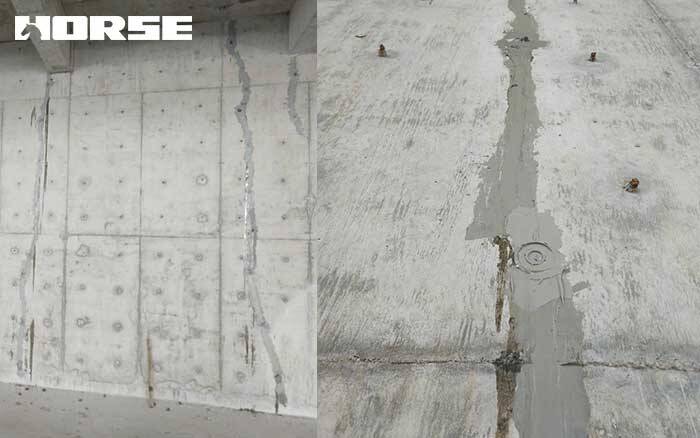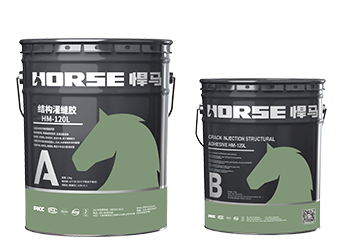Solutions
Horse Construction offers full range of structural strengthening materials with technical supports, documentation supports, products supports, project supports.
structural crack repair

Cracks in buildings are a relatively common phenomenon, which not only affects the appearance, but structural cracks are also a sign of potential safety hazards in the structure. Therefore, the investigation and repair of cracks in the structure of the house is also the focus of the industrial plant to prevent and control the construction hazards. When the cracks in the house structure have endangered the structural safety, structural reinforcement measures should be taken in a timely manner.
According to the cause of cracks, it can be divided into the following three categories
(1) Cracks formed by external loads
That is, the cracks caused by the conventionally calculated main stress. Under the effect of external load (dynamic load, static load and the actual working state of many structures beyond the stress generated by the design), the cracks generated by the concrete structure of the factory building exceed their own tensile strength are called load cracks. Especially industrial plants with crane beams are more prone to this crack.
(2) Cracks caused by structural deformation
Cracks caused by factors such as temperature, concrete shrinkage, expansion, and uneven settlement. The concrete structure has the properties of thermal expansion and contraction. The structure deforms when subjected to temperature. When the constrained stress generated when the deformation is constrained exceeds the tensile strength of the concrete, temperature cracks will occur. In the hardening process of concrete, the internal temperature rises due to the hydration heat of cement, and the water dispersion is too fast to cause shrinkage and cracks. This dry shrinkage crack also belongs to temperature cracks.
(3) Cracks caused by the secondary stress of the structure due to external load
Secondary stress refers to the external load stress that is not normally calculated. For example, the support end of the roof truss is calculated according to the hinged joint, but the actual concrete roof truss joint has bending distance and shear force. Because the soil quality of the foundation varies greatly. The supporting layer of the concrete structure is located in the soft soil layer. The plane structure of the building is complex and the foundation is dense at the intersection of horizontal and vertical units. The overall rigidity of the building is poor, and the asymmetry of the rigidity will cause uneven settlement, resulting in cracks in the concrete structure.
For the cracks in the reinforced concrete structure mentioned above, structural reinforcement measures can be used to ensure the subsequent safe use of the building structure. Reinforcement methods for concrete structures include: reinforced cross-section reinforcement method, steel-encased reinforcement method, prestressed reinforcement method, modified structure force transmission reinforcement method, externally bonded steel reinforcement method, carbon fiber cloth reinforcement method, etc.
In addition, the following housing conditions should also be timely reinforced measures of the house structure:
The function of the original building is changed, and some structural members need to be strengthened;
The original building is added on the roof or indoors. Due to the increased load, the relevant structural parts need to be strengthened;
The original components in the building hinder the use and need to be dismantled, the force transmission path of the original structure has changed, and structural reinforcement treatment is required;
New mechanical and electrical equipment, elevators, escalators, etc. are added to the building, and the load up to the foundation of the equipment is increased, which requires structural reinforcement;
The plane position of the elevator and staircase has changed, the original staircase is demolished, and the opening of the sealed floor slab and the newly opened hole need to be strengthened;
Due to design changes or construction errors in the construction in progress, the demolition and reconstruction of local locations all require structural reinforcement;
The original building is in overdue service, but there is no condition to demolish the reconstructed building. The main structure of the structure needs to be strengthened.
You can find anything here you are in need of, have a trust trying on these products, you will find the big difference after that.

High strength, unidirectional carbon fiber wrap pre-saturated to form a carbon fiber reinforced polymer (CFRP) wrap used to strengthen structural concrete elements.

High strength crack sealing repairing adhesive for the fracture surface of concrete crack

Very strong penetration and low viscosity epoxy crack injection adhesive for repairing concrete crack